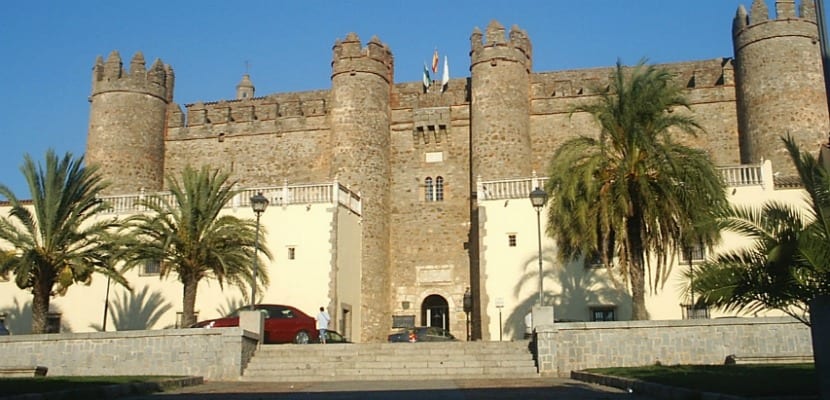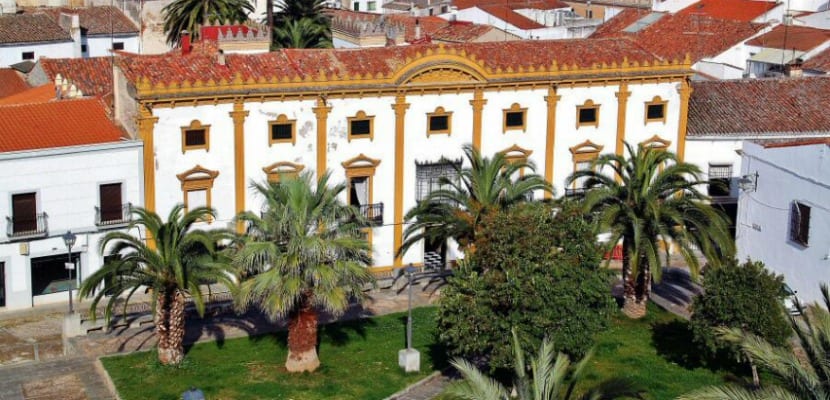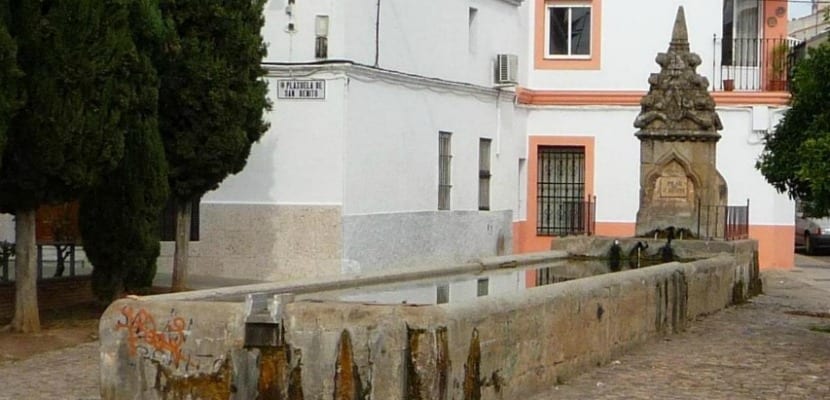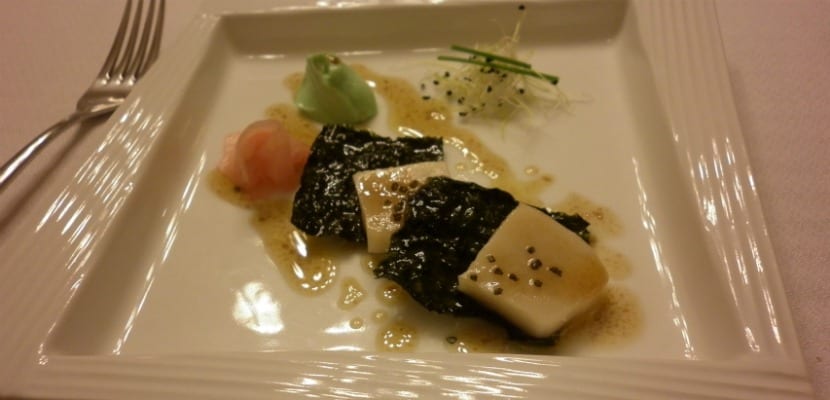
Zafra Castle
Zafra is one of the most popular cities in Extremadura. Its situation south of Badajoz (between the mountains of Los Santos and El Castellar) and on the edge of the old Roman road of La Plata (between Andalusia, Castilla La Mancha and the Alentejo) has turned this city into a tourist landmark as a place of rest and vacations.
It is a small city of approximately 17.000 inhabitants that can be visited in a very short time, so you will have no excuse not to go to this beautiful town in Badajoz.
Origin of Zafra
Apparently it is of Roman origin (after all it is on the Vía de la Plata), although remains of the Bronze Age have been found. In the Middle Ages its development was Muslim until it was conquered by King Ferdinand III back in the XNUMXth century. In any case, it was necessary to wait for the Trastamara dynasty to take over the reins of the Castilian crown for Zafra to acquire an increasingly relevant role in southern Extremadura.
In the year 1.394 Juan II donated, under the name of Señorío de Feria, Zafra together with the villages of Feria and La Parra to Gomes I Suárez de Figueroa, waiter of the Castilian queen and son of Lorenzo Suárez de Figueroa, Grand Master of the Order of Santiago.

Zafra Parador
The new lords of Zafra decided to make it the center of their domains and the town was adopting a new physiognomy as the construction of a defensive wall and large buildings for the residence of their owners began. When in the seventeenth century the family line rose to the greatness of Spain, a new urban approach was given to the town. In this way, the old Alcázar was converted into a palace in keeping with the new tastes of the Austrian court.
Under the favor of the Casa de Feria, the Hospitals of Santiago, San Miguel and San Ildefonso and female convents such as the Poor Clares of Santa Marina, the Tertiary of La Cruz and the Dominican ones of Santa Catalina and Regina Coeli were also created. Outside the wall stood the Dominican monasteries of Santo Domingo del Campo and El Rosario, and the Franciscan monasteries of San Benito and San Onofre de La Lapa.
What to see in Zafra?

Pillar of San Benito Zafra
- Muralla: Zafra was a walled city in the late Middle Ages. Hence, three of the access gates to the town are preserved: Jerez, El Cubo and Palacio.
- Castle- palace of the Duke of Feria: it is the main construction that had a defensive cut but a palatial purpose. Currently, it is a parador de turismo. The value of the palace is expressed through its spectacular façade and its majestic Renaissance courtyard, in an ideal enclave to discover the monumental surroundings and the landscapes of the area. All visitors are amazed by its grand interior, which preserves beautiful coffered ceilings, ironwork, handrails and decorative elements of the old palace.
- Plazas: Inherent to the personality of Zafra is the commercial activity. The population used to meet in the Plaza Chica and the Plaza Grande, joined by the Arquillo del Pan, to do their shopping. Both have arcades and are the center of handicraft alleys. The continued maintenance of the commercial activity was rewarded with the Royal concession to Zafra of the title of city in 1882, the Regional Fair of the Extremeño Field in 1966 and the International Livestock Fair in 1992.
- Religious buildings: The convents played a leading role, such as that of Santa Marina (linked to the Fair House), that of Santa Clara (with sculptures of members of the duchy), that of Rosario or that of Santa Catalina. The Collegiate Church of La Candelaria has a late Gothic and Mudejar structure and Baroque work, especially by Zurbarán or Churriguera. It also houses a sacred museum with pieces of interest.
- Culture: they are historical sources that adorn the Zafra layout. One of the most prominent is that of San Benito, in the mid-XNUMXth century Gothic style.
- Other places of interest: the Hospital de Santiago (with a Plateresque-Mudejar façade) or the Jewish remains in synagogues, streets and houses.
Where to eat in Zafra?

La Rebotica | Image via GastroExtremadura
So much sightseeing is sure to whet your appetite. The gastronomy in Zafra deserves a special mention. The following are some of the highly recommended restaurants to enjoy the delicacies of this land.
- Cinnamon Stick. The popular chef Pepe Crespo changed locations a couple of years ago but maintains his traditional Extremaduran culinary offer. Torta del Casar, spinach croquettes with pine nuts, oxtail, retinto burger with Torta del Casar and crispy onion, white chocolate truffles to finish. House wine, the local Viña Puebla Tempranillo, from the DO Ribera del Guadiana.
- Barbican. Its cuisine could be described between the regional and the modern: cheese from La Serena, Iberian ham, turbot loins, suckling pig from Zafra roasted with the aroma of thyme ... delicious!
- The back room. The kitchen of chef José Luis Entrada navigates between the rustic, the modern and even the exotic. Sliced duck foie gras garnished with Jerte cherry vinegar, Iberian cheeks braised in port with zucchini and blueberry ravioli, butterfish with crunchy nori seaweed and wasabi mayonnaise with ginger and soy, and a delicious 'crême brulée' apple with ice cream.